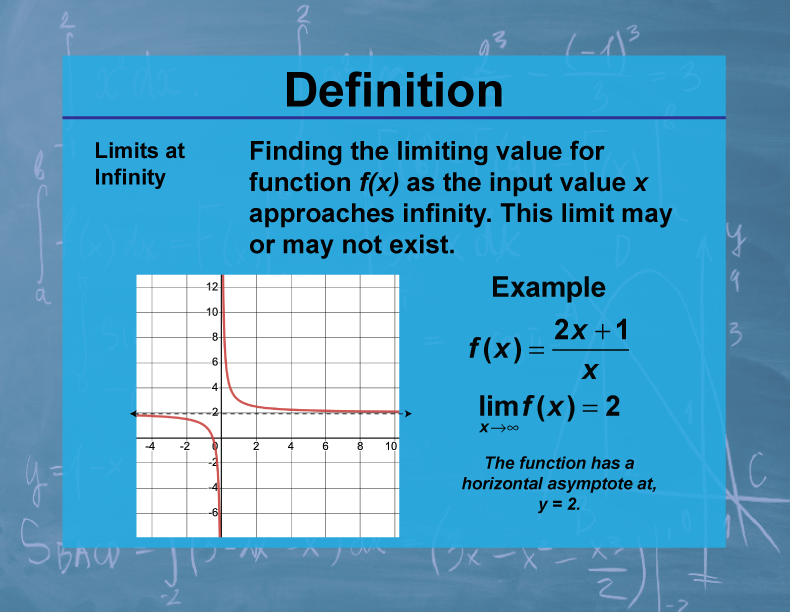
Display Title
Definition--Calculus Topics--Limits at Infinity
Display Title
Definition--Calculus Topics--Limits at Infinity

Topic
Calculus
Definition
A limit at infinity, denoted as lim[x→∞] f(x) = L, means that the value of f(x) can be made arbitrarily close to L by making x sufficiently large. Similarly, lim[x→-∞] f(x) = L means f(x) approaches L as x becomes arbitrarily large in the negative direction.
Description
Limits at infinity are crucial for understanding the long-term behavior of functions. They are particularly important in analyzing asymptotic behavior and in fields like economics, physics, and engineering where long-term trends are often of interest. These limits help us determine horizontal asymptotes and end behavior of functions.
In mathematics education, studying limits at infinity helps students develop intuition about function behavior over large scales. It's essential for understanding concepts like asymptotes and improper integrals. This topic also provides a bridge between algebra and calculus, helping students see how polynomial degrees relate to long-term function behavior.
Teacher's Script: "Imagine you're looking at population growth over time. As time goes on indefinitely, what happens to the population? This is where limits at infinity come in handy. Let's look at the function f(x) = (3x2 + 2x) / (x2 + 1). What happens to this function as x gets very large, both positive and negative? How can we determine these limits? What does this tell us about the function's behavior in the long run? Can you think of other real-world scenarios where understanding behavior 'at infinity' might be useful?"

For a complete collection of terms related to Calculus click on this link: Calculus Vocabulary Collection.
| Common Core Standards | CCSS.MATH.CONTENT.HSF.IF.C.7, CCSS.MATH.CONTENT.HSF.BF.A.1.C |
|---|---|
| Grade Range | 11 - 12 |
| Curriculum Nodes |
Algebra • Advanced Topics in Algebra • Calculus Vocabulary |
| Copyright Year | 2023 |
| Keywords | calculus concepts, limits, derivatives, integrals, composite functions |